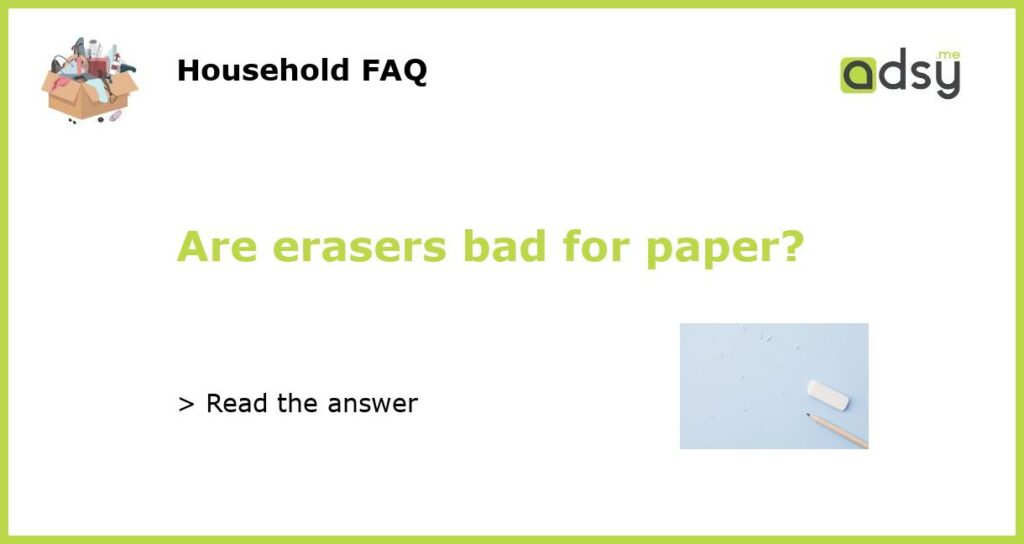Understanding the Effect of Erasers on Paper
When it comes to erasing mistakes on paper, many people wonder if using an eraser can actually be harmful to the paper itself. It’s a valid concern, especially when dealing with important documents or delicate surfaces. In this article, we will explore the impact that erasers can have on paper and whether or not they are truly bad for it.
The Science Behind Erasing on Paper
Before diving into whether erasers are bad for paper, it’s important to understand the science behind the process of erasing. Erasers work by gently abrading the surface of the paper, removing pencil marks through friction. This process typically involves the transfer of graphite particles from the pencil to the eraser, which is why you may see pencil residue on the eraser after use.
Factors that Can Affect Paper Damage
While erasers are designed to erase pencil markings without causing significant damage to the paper, certain factors can increase the likelihood of paper damage during the erasing process. These factors include the pressure applied while erasing, the type and quality of the paper, and the type of eraser being used.
Selecting the Right Eraser for the Job
Choosing the right eraser for the job can greatly reduce the risk of paper damage. There are several types of erasers available, each with their own unique properties. For delicate surfaces or sensitive documents, using a soft, vinyl or gum eraser is recommended as they are less likely to cause abrasion. Kneadable erasers are also a good option for gentle erasing. For everyday use on standard paper, a traditional rubber eraser can be sufficient.
Tips for Minimizing Paper Damage
If you want to minimize the potential for paper damage while erasing, here are a few helpful tips to keep in mind:
- Use light, gentle strokes when erasing to avoid excessive pressure on the paper.
- Do not erase aggressively or scrub the paper with the eraser, as this can cause tearing or thinning of the paper fibers.
- Test the eraser on a small, inconspicuous area of the paper before applying it to the entire surface.
- Consider using a protective sheet, such as a blotting paper or a plastic sleeve, to prevent direct contact between the eraser and the paper.
- Regularly clean your erasers to remove any accumulated graphite particles that could potentially transfer back onto the paper.
Overall, erasers are not inherently bad for paper. When used properly and with caution, they can safely remove pencil markings without causing significant damage. By understanding the science behind erasing, selecting the right eraser for the job, and following the tips mentioned above, you can minimize the potential for paper damage and maintain the integrity of your documents and artwork.






